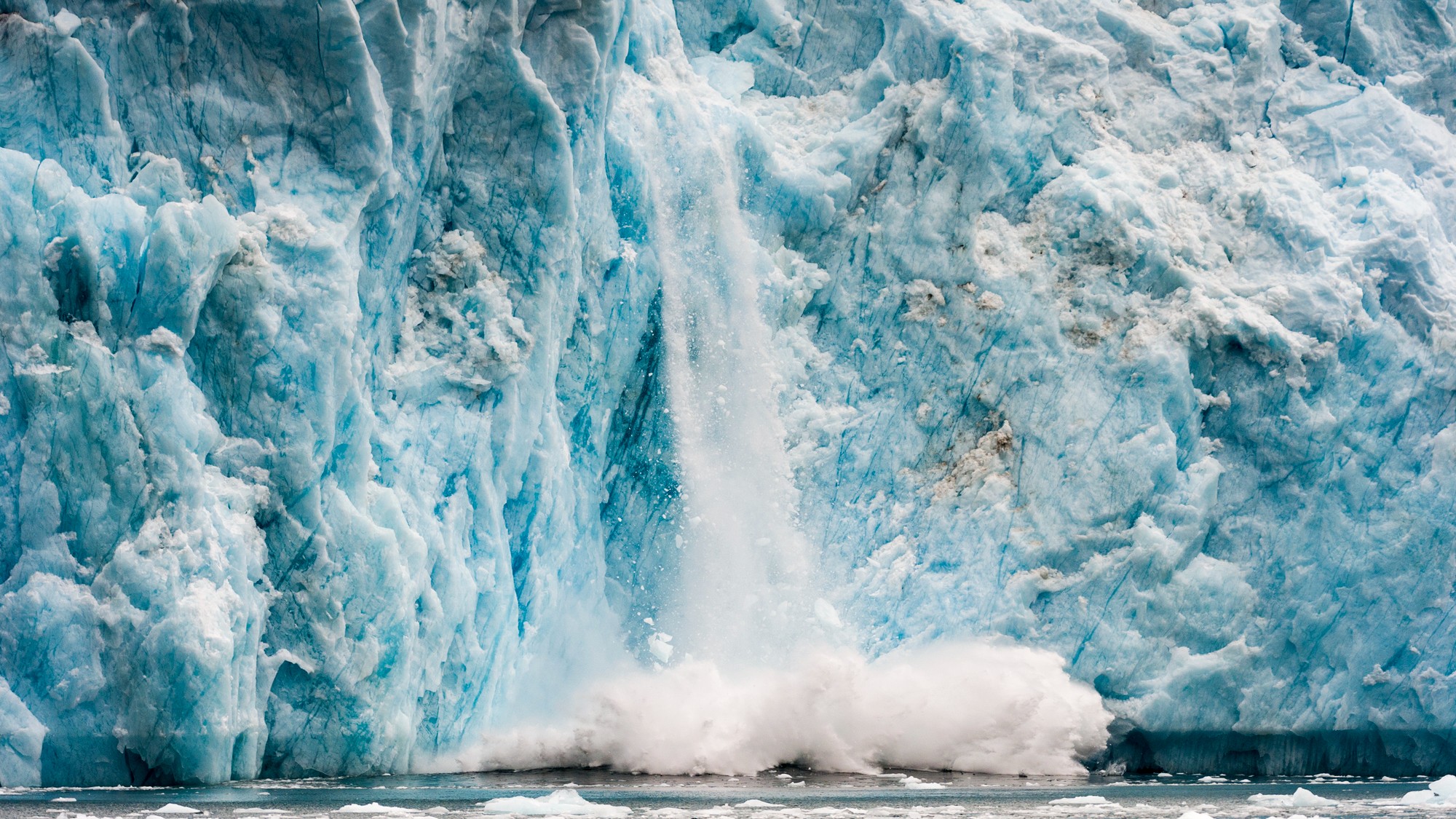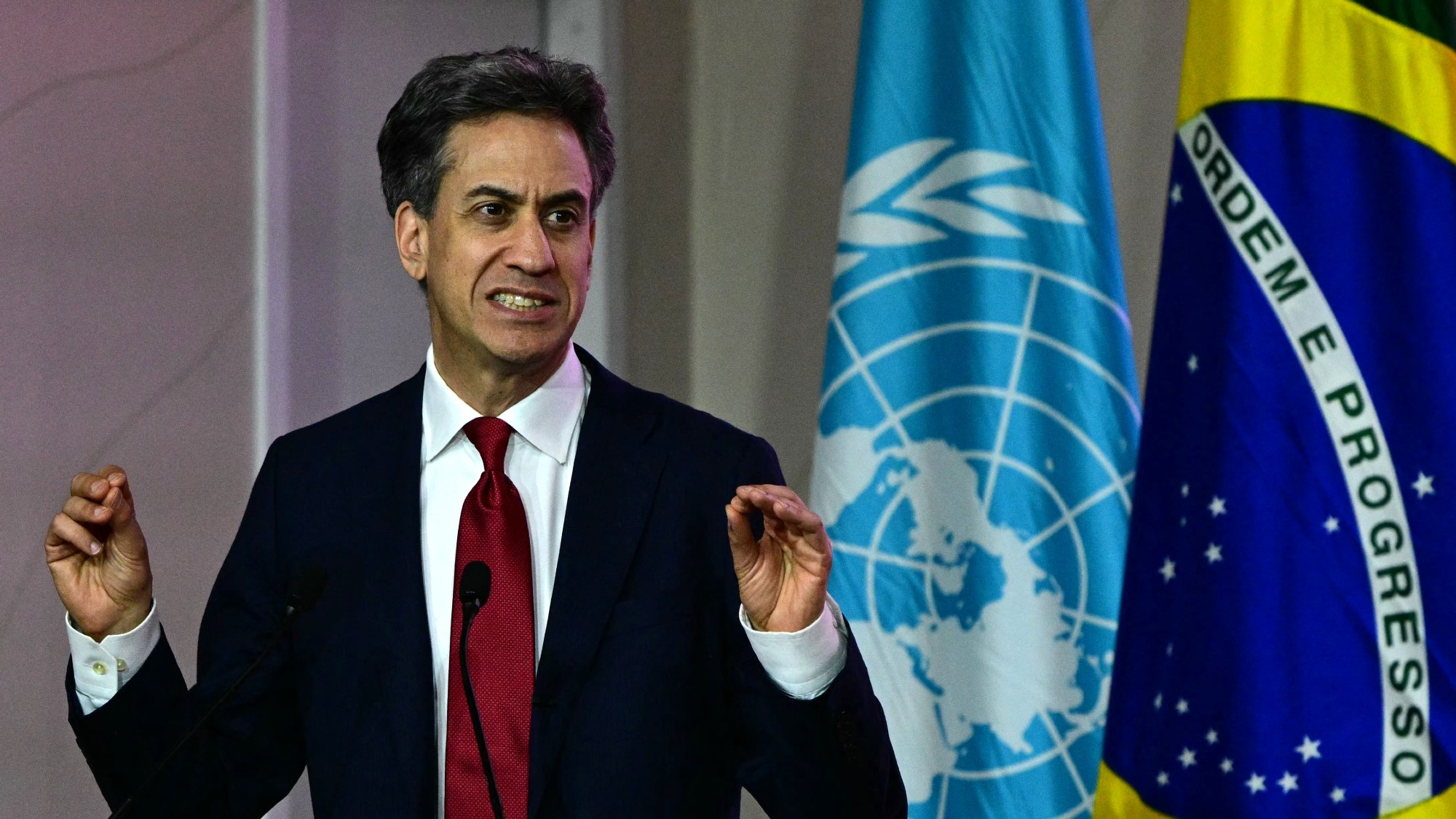What is rock flour and how can it help to fight climate change?
Glacier dust to the rescue


Climate change is becoming more severe largely due to excess greenhouse gas emissions. Carbon dioxide is one of the most prevalent gases contributing to rising temperatures worldwide — and while limiting emissions is a priority to curb climate change, scientists have also been exploring ways to mitigate the effects by removing atmospheric CO2. Fine glacier powder, or rock flour, could be an effective tool because of its essentially unlimited quantity and the fact that it can also be used to improve agricultural crop yields.
What is rock flour?
Rock flour is the fine powder that results from glaciers grinding stone into dust. The substance has been seen in vast quantities in Greenland and it is "finer than most sand found on a beach," said The Washington Post. This glacier dust could potentially soak up carbon emissions, plus the material is nutrient-dense and can be used as a fertilizer for agricultural purposes. Research shows that rock flour "can trap climate-heating carbon dioxide when spread on farm fields," said The Guardian.
"Natural chemical reactions break down the rock powder and lead to CO2 from the air being fixed in new carbonate minerals," added The Guardian. Two studies from March 2023 and May 2023 highlighted the potential of rock flour as a way to both improve crop yield and suck carbon dioxide from the atmosphere. "Unlike other sources of silicate minerals for enhanced weathering, glacial rock flour does not need any processing, and the amount available in Greenland is effectively unlimited," Christiana Dietzen, a soil scientist at the Globe Institute at the University of Copenhagen who worked on both studies, said in a statement. In addition, "compared to an organic fertilizer, which provided additional potassium, magnesium, and sulfur, the glacial rock flour actually worked better, presumably because it provides a wider array of plant nutrients."
The Week
Escape your echo chamber. Get the facts behind the news, plus analysis from multiple perspectives.

Sign up for The Week's Free Newsletters
From our morning news briefing to a weekly Good News Newsletter, get the best of The Week delivered directly to your inbox.
From our morning news briefing to a weekly Good News Newsletter, get the best of The Week delivered directly to your inbox.
How can it help fight climate change?
Rock flour's potential has only just scratched the surface. "We have only reached 8% of the glacial rock flour's potential to transform CO2 in three years. The implication here is that though this process is effective, it is not a quick solution, but could take decades to realize its full potential," said Dietzen. "The rock flour works best in certain soil — slightly but not too acidic," said the Post. "Researchers need to measure more precisely how much CO2 [farming] techniques are taking up, so farmers and others can eventually make money by selling carbon credits." Not enough is known about rock flour to begin sprinkling it on fields just yet, but it could reduce the need for fertilizers, which have been known to run off into waterways and harm aquatic ecosystems.
"There's a novelty to the idea in using pre-ground material," said Bob Hilton, a geochemist from the University of Oxford, to the Post. "There's interest in the idea because a glacier processes produce huge amounts of this material." The mineral can also "easily be shipped to the farmers in containers," Verner Hammeken, the former CEO of Greenland shipping company Royal Arctic Line, said to Reuters — though this may come with its own complications. "It is important to account for the carbon footprint of transporting the material to make sure that the use of glacial rock flour is truly carbon negative and to avoid using it in locations where the transport emissions would outweigh CO2 uptake," Dietzen said.
A free daily email with the biggest news stories of the day – and the best features from TheWeek.com
Devika Rao has worked as a staff writer at The Week since 2022, covering science, the environment, climate and business. She previously worked as a policy associate for a nonprofit organization advocating for environmental action from a business perspective.
-
 The ultimate films of 2025 by genre
The ultimate films of 2025 by genreThe Week Recommends From comedies to thrillers, documentaries to animations, 2025 featured some unforgettable film moments
-
 Political cartoons for January 3
Political cartoons for January 3Cartoons Saturday's political cartoons include citizen journalists, self-reflective AI, and Donald Trump's transparency
-
 Into the Woods: a ‘hypnotic’ production
Into the Woods: a ‘hypnotic’ productionThe Week Recommends Jordan Fein’s revival of the much-loved Stephen Sondheim musical is ‘sharp, propulsive and often very funny’
-
 Environment breakthroughs of 2025
Environment breakthroughs of 2025In Depth Progress was made this year on carbon dioxide tracking, food waste upcycling, sodium batteries, microplastic monitoring and green concrete
-
 Crest falling: Mount Rainier and 4 other mountains are losing height
Crest falling: Mount Rainier and 4 other mountains are losing heightUnder the radar Its peak elevation is approximately 20 feet lower than it once was
-
 Death toll from Southeast Asia storms tops 1,000
Death toll from Southeast Asia storms tops 1,000speed read Catastrophic floods and landslides have struck Sri Lanka, Indonesia, Thailand and Malaysia
-
 Can for-profit geoengineering put a pause on climate change?
Can for-profit geoengineering put a pause on climate change?In the Spotlight Stardust Solutions wants to dim the sun. Scientists are worried.
-
 How will climate change affect the UK?
How will climate change affect the UK?The Explainer Met Office projections show the UK getting substantially warmer and wetter – with more extreme weather events
-
 Can the UK do more on climate change?
Can the UK do more on climate change?Today's Big Question Labour has shown leadership in the face of fraying international consensus, but must show the public their green mission is ‘a net benefit, not a net cost’
-
 The UK’s surprising ‘wallaby boom’
The UK’s surprising ‘wallaby boom’Under the Radar The Australian marsupial has ‘colonised’ the Isle of Man and is now making regular appearances on the UK mainland
-
 Did Cop30 fulfil its promise to Indigenous Brazilians?
Did Cop30 fulfil its promise to Indigenous Brazilians?Today’s Big Question Brazilian president approves 10 new protected territories, following ‘unprecedented’ Indigenous presence at conference, both as delegates and protesters
